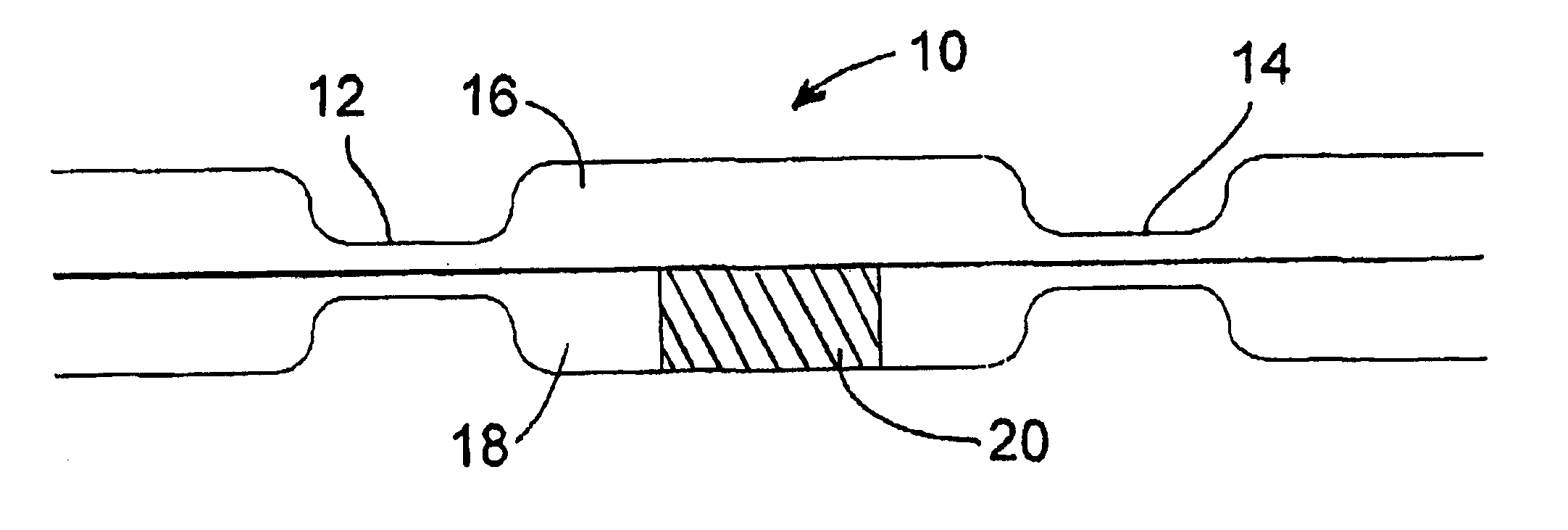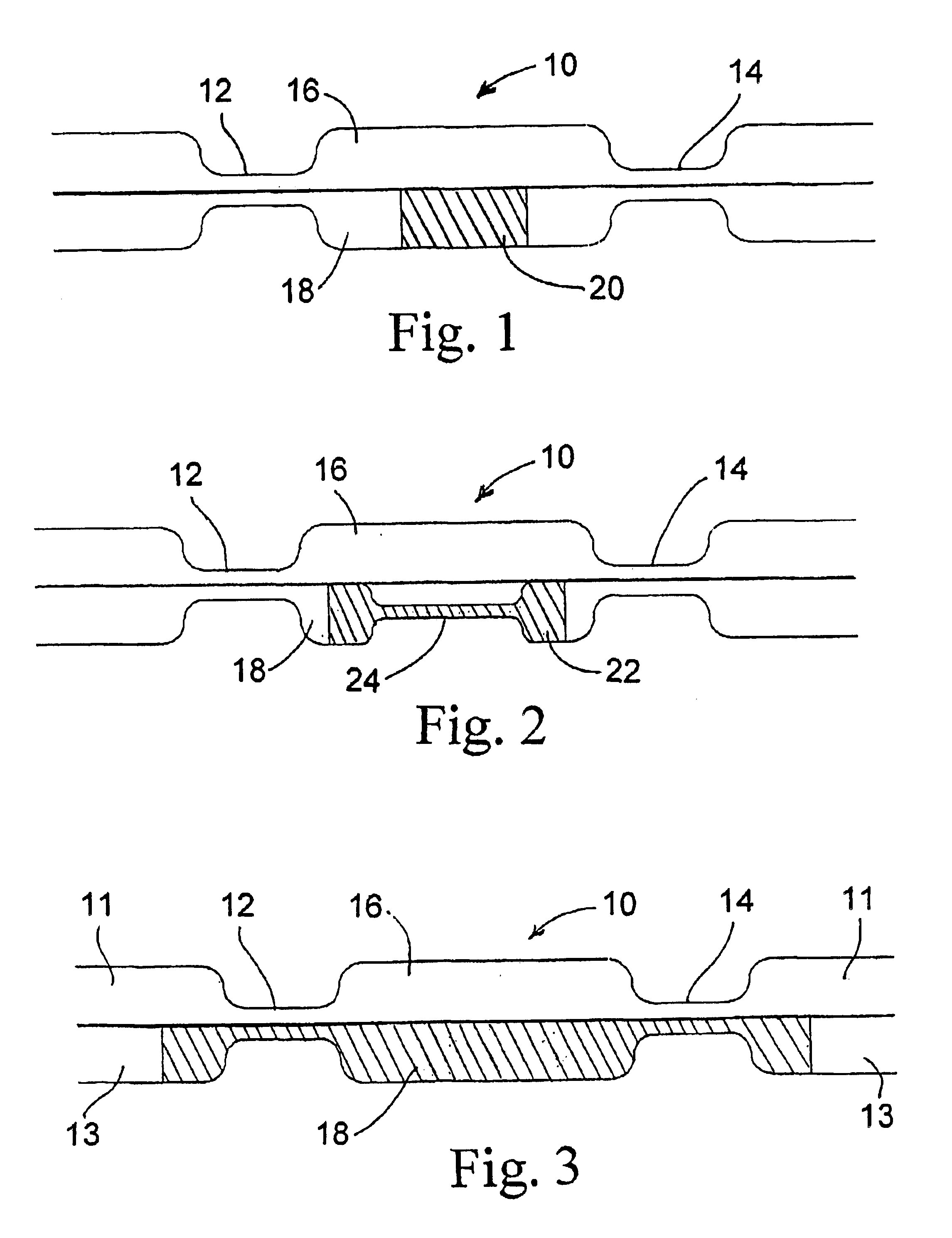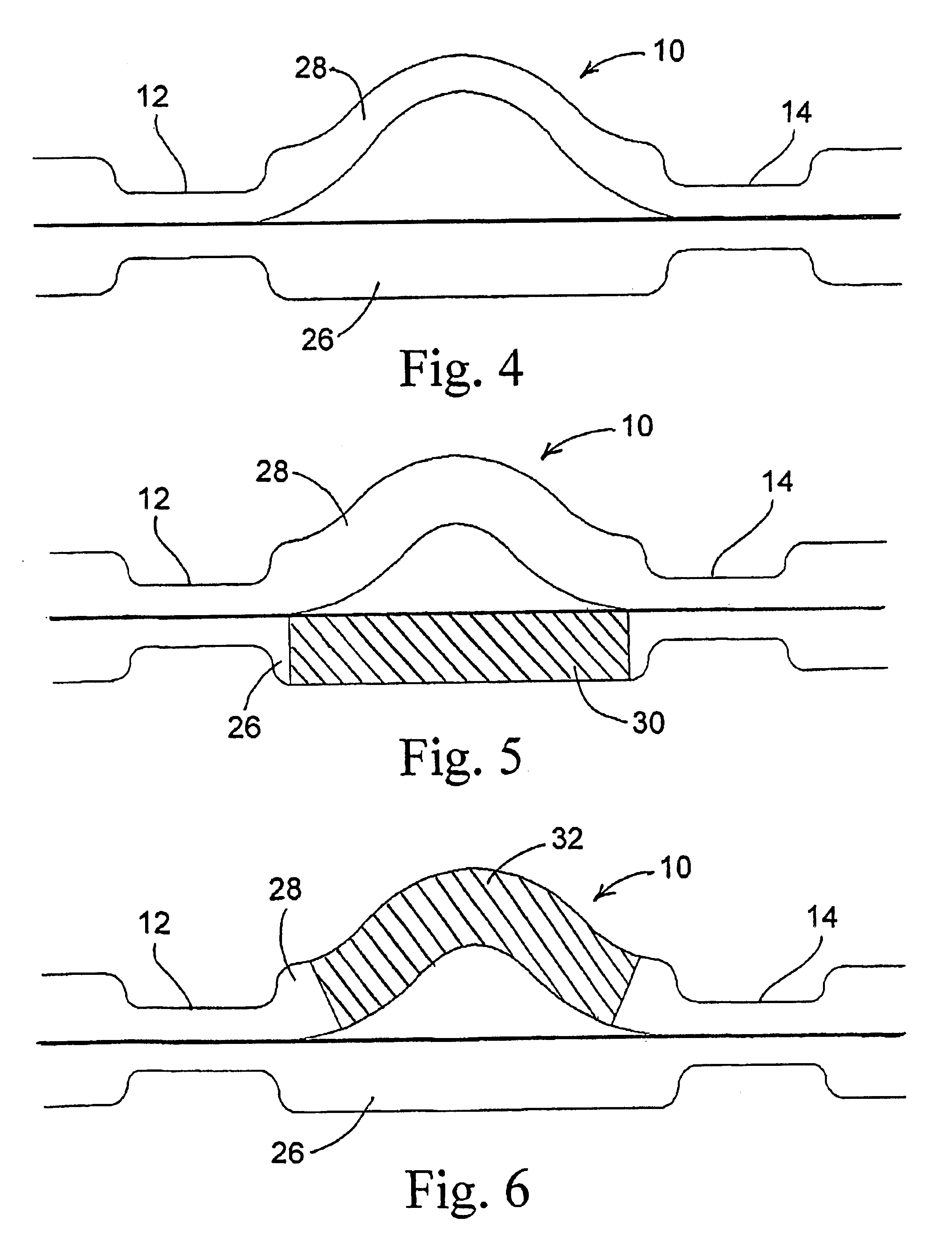Passive thermal compensation of all-fiber Mach-Zehnder interferometer
a technology of interferometer and all-fiber fiber, applied in the field of machzehnder interferometer, can solve the problems of difficult operation, not very practical feature, and difficult procedur
- Summary
- Abstract
- Description
- Claims
- Application Information
AI Technical Summary
Benefits of technology
Problems solved by technology
Method used
Image
Examples
Embodiment Construction
In the drawings, the same elements are identified by the same reference numbers.
The embodiment shown in FIG. 1 illustrates a Mach-Zehnder interferometer 10 having two couplers 12 and 14 interconnected by two equal length arms 16 and 18 made of a standard SMF 28 fiber of index of refraction N1. The length of fiber 16 (L1) is equal to the length of fiber 18 (L2) and thus L1=L2. In this embodiment, fiber 18 has a segment 20 of length L3 made of a different fiber, having a different index of refraction N2, which produces the desired thermo-optic effect. It is already known, for instance from U.S. Pat. Nos. 5,943,458 and 6,031,948, that a phase shift region between the couplers of a Mach-Zehnder device can be achieved by using equal length arms, but inserting in at least one of these arms a segment of a fiber with a different index of refraction, thereby producing a difference in optical path length between the two arms, required to form a Mach-Zehnder effect. However, what was not known...
PUM
| Property | Measurement | Unit |
|---|---|---|
| temperature | aaaaa | aaaaa |
| temperature | aaaaa | aaaaa |
| optical path length | aaaaa | aaaaa |
Abstract
Description
Claims
Application Information
 Login to View More
Login to View More - R&D
- Intellectual Property
- Life Sciences
- Materials
- Tech Scout
- Unparalleled Data Quality
- Higher Quality Content
- 60% Fewer Hallucinations
Browse by: Latest US Patents, China's latest patents, Technical Efficacy Thesaurus, Application Domain, Technology Topic, Popular Technical Reports.
© 2025 PatSnap. All rights reserved.Legal|Privacy policy|Modern Slavery Act Transparency Statement|Sitemap|About US| Contact US: help@patsnap.com



